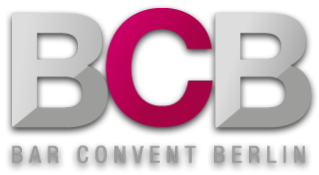Opera goes Cocktail: The new Menu at Chiaro Bar Berlin
© Hotel De Rome
Bar ohne Namen
Entschlossen verweigert sich Savage, der Bar einen Namen zu geben. Stattdessen sind drei klassische Design-Symbole das Logo der Trinkstätte in Dalston: ein gelbes Quadrat, ein rotes Viereck, ein blauer Kreis. Am meisten wurmt den sympathischen Franzosen dabei, dass es kein Gelbes-Dreieck-Emoji gibt. Das erschwert auf komische Weise die Kommunikation. Der Instagram Account lautet: a_bar_with_shapes-for_a_name und anderenorts tauchen die Begriffe ‘Savage Bar’ oder eben ‚Bauhaus Bar‘ auf.
Für den BCB bringt Savage nun sein Barkonzept mit und mixt für uns mit Unterstützung von Russian Standard Vodka an der perfekten Bar dazu.
The cocktails on the new menu of the Chiaro Bar at Berlin’s Hotel de Rome go by the name of opera classics. And not only that: underlying them is a well-thought out and tasteful concept rarely seen in a hotel bar.
Madama Butterfly, the Marriage of Figaro, Elektra and The Knight of the Rose: the February programme of the Staatsoper Unter den Linden features the names of many classics in the opera world. At the Hotel de Rome on the other side of the large Bebelplatz these names are echoed by the new cocktail menu of the Chiaro Bar, which is inspired by the world of opera.
The two institutions have long been linked: hotel guests stroll over to the opera in the evening, while opera-goers visit the restaurant and the bar for dinner or a drink before and after the performance. When the hotel reopened after the first Covid lockdown in June 2020, eight Staatsoper soloists stood at the windows of the hotel and sang “Arrivederci Roma” by Renato Rascel as well as Paul Lincke’s “Berliner Luft” in front of a large audience.
Bar Manager of Chiaro Bar, Javier Fernandez
© Jan-Peter Wulf
A menu nearly 10 months in the making
The new cocktail menu strengthens the ties between the two institutions because it not only picks up on the names but also builds on a thoroughly researched concept with plenty of preparatory work: almost 10 months passed between the first idea and the launch, reports F&B Director Carlo Zörkler. The programme of the opera and the plot of the pieces were studied. There were meetings to consult with the general and art directors as well as the artists; they were asked which beverages and spirits they associate with the operas, which ones they like drinking themselves. In addition, permission from photographers was obtained to be able to feature scenic images of the performances in the menu.
Travelling to the places in one’s mind
The velvet-covered menu includes fourteen cocktails, two of which are alcohol-free. But how does an opera become a drink? Bar manager Javier Fernandez explains that he and his team travelled to the operas’ sites in their thoughts. For “Elektra” for instance, they embarked upon a journey to Ancient Greece since this opera by Richard Strauss is based on a tragedy by Sophocles. Grain was considered precious back then, and in this cocktail grain is staged with Scotch (a 12-year-old Dalmore), an IPA reduction as well as verjuice, herb liqueur and bitters, crowned with an ear of corn on a large ice cube. A powerful drink.
Floral, opulent, complex
By contrast, the “Knight of the Rose” is presented with a floral twist in keeping with the name and theme of Strauss’ second great opera: featuring Hendrick’s Flora Adora, the apéritif Anna Famosa, lemon, Tonka bean, egg white and topped up with pink Champagne. Mozart’s “Marriage of Figaro” is opulent: cognac, rum, orange liqueur, coconut, vanilla, white chocolate, passion fruit, Champagne froth whereas the “Queen of the Night” from his “Magic Flute” offers a complex mix of tequila, smoky whisky, balsamic vinegar, red current and bitters.
The alcohol-free “Aida” is mixed with hibiscus tea – always a popular drink in this opera’s setting, Egypt – and cordial made from thyme, honey and lemon, topped up with ginger beer. For Richard Wagner’s “Siegfried” Fernandez made an obvious choice opting for the non-alcoholic “Siegfried Wonderleaf” from Rheinland Distillers.
„Die Königin der Nacht"
© Hotel De Rome
Elegant signature food
Operas also served as an inspiration for the accompanying food: what were the favourite foods of the composers and authors? Tchaikovsky is said to have loved caviar, which is why it adorns the scallop ceviche bearing his name. Beethoven, you can almost imagine, liked things simpler: pasta with cheese. “His” dish is home-made, excellent Tonnarelli “Cacio e Pepe” garnished with lobster. For Mozart the obvious choice would have been spherical chocolate pralines known as “Mozart Balls” but here they are more oblong in shape: hazelnut parfait, pistachio and Original Beans chocolate make for a grand culinary finale.
„Madama Butterfly" (links) und „Carmen" (recht)
© Hotel De Rome
Also a welcome nod of appreciation
The new menu was launched with a small kick-off event late last year, to which contributors on and behind the opera stage were also invited. The menu is not designed to be temporary – the cooperation is meant to be a long-term one. And it works: often, says Fernandez, the fastest selling cocktail of the day is the one that bears the name of the opera performed across the square that evening.
To sum up: a consistent and tasteful concept in the truest sense of the word. And in times when cultural venues in Berlin are hard hit and even seriously under threat by cost-saving measures this is also a welcome nod of appreciation.
Chiaro Bar
Hotel de Rome
Behrenstraße 37
10117 Berlin
CHIARO Bar | Cocktailbar in Berlin | Hotel de Rome
